The Incredible True Story of Master Craftsman, Freedman Thomas Day
He rose to an elite status and created his own style along the way
![]()

A later piece shows Thomas Day’s uniquely “Exuberant Style” in full bloom. Whatnot, 1853-1860. Collection of Margaret Walker Brunson Hill, courtesy of the Renwick Gallery
North Carolina’s most in-demand, pre-Civil War, master cabinetmaker Thomas Day had everything it took to be Southern royalty–land, money, education. Yet, Day was a black man. Born in a community of free African-Americans in southern Virginia, Day was able to achieve such fame that his customers created a double meaning for the term “daybed,” a convenient play on his name. His story is as striking as his unique creations, marked by his very own “Exuberant Style,” of which a collection of 39 exemplary works can be seen at the Renwick Gallery for its new show “Thomas Day: Master Craftsman and Free Man of Color.”
Day came from educated and well-to-do parents. His mother, Mourning Stewart, was the daughter of a free mulatto who owned some 800 acres of land as well as slaves. His father, John Day, was the son of a white woman from South Carolina, who was sent away to a Quaker community to have her child. Because he was born free, John Day was required by law to learn a trade by the time he was 18, in this case cabinetmaking. Day, then, settled with his wife and two sons—Thomas and John, Jr—in Petersburg, Virginia, a community of free people. The family eventually relocated to North Carolina.
With his father’s tutelage and training, Thomas Day set up his own shop in 1827 in Milton, North Carolina. Though being a black cabinetmaker was a rarity–96 percent of the cabinetmakers in the state were white–Southern society was actually somewhat less restrictive in the early 1800s than in the period directly before the Civil War, according to Renwick Gallery chief Robyn Kennedy, who brought the show to the gallery from the North Carolina Museum of History. “He was accepted into elite mercantile plantation society,” says Kennedy. The exhibit opens with proof of his standing: a petition signed by members of the community to allow Day’s bride to travel from Virginia to North Carolina (something not allowed at the time for a free person) as well as a pew he designed for the otherwise white church he attended.
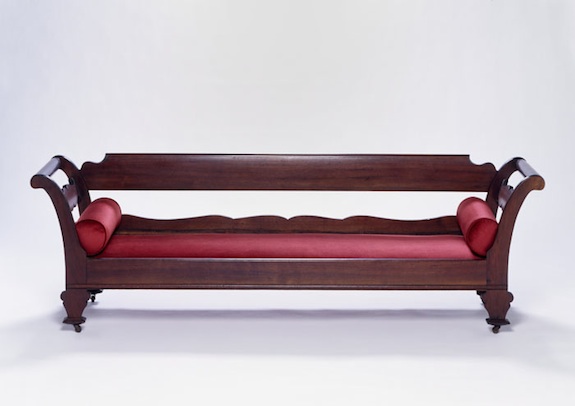
Even in simpler works, the subtle undulation of an ogee curve gives character. Sofa, 1845-1855. Collection of the North Carolina Museum of History, courtesy of the Renwick Gallery

Day mixes Gothic arches with the sensuous ogee curves of the footboard for a dramatic bedstead. Collection of the North Carolina Museum of History, courtesy of the Renwick Gallery
“He was a very astute businessman,” Kennedy adds. In addition to owning his own workshop and fields to supply timber, Day also employed roughly 14 workers and owned slaves. He sought to compete with cities like Philadelphia and New York and established a reputation for his output. Even when he represented 11 percent of the state’s furniture market, he never lost his unique artistic flair that kept customers asking for more. Governor David S. Reid, for example, ordered no fewer than 47 pieces from Day.
Though he “worked in a variety of styles,” says Kennedy, “it was basically what was popular at the time.” Greek Revival architecture called for matching pieces and Day was adept at crafting works to suit his client’s tastes, from conservative to more adventurous.
The beauty of his pieces, says Kennedy, is that at first glance, they fit the style of the day, but upon examination, small touches emerge that are unlike anything else being produced. Curves, cutouts and shapes unique to Day’s studio characterize his wooden masterpieces, which included architectural enhancements and features done in clients’ homes as well. One cabinetmaker installing replicas of some of Day’s pieces from North Carolina’s homes said to Kennedy, “Who was this guy–all the swirls and curlicues!”
Day was given considerable freedom to create his playful style. “A lot of his work was done with a verbal description and a handshake,” says Kennedy. His own adaptation of the French Antique tradition was known as “Exuberant Style.” Kennedy says elements of his fluid forms don’t seem to show up again until Art Nouveau.
But 1857, however, even his reputation could not sustain him through an economic crash and impending Civil War. He had to sell his shop and fell from the state’s first to fourth most prominent cabinetmaker. Day died in 1861 and after the war, one of his sons bought the shop back and tried for a few years to revive the business. He would eventually move to Washington state, likely in response to KKK activity. His other son is lost in the records far before then. He was rumored to have “passed” for white, married a white woman and moved to Washington, D.C. to work in government. Meanwhile Day’s brother, John Jr., had traveled to Liberia as a minister. There he helped draft the country’s constitution and was eventually appointed to its Supreme Court in 1854.
Day’s great-grandson, William A. Robinson traveled back to Milton and says, “old aristocratic families, now poor, who have old rotting mansions and formal gardens ‘gone to pot’. . . still have antique furniture made by Thomas Day, which they now consider their most valuable possessions.”
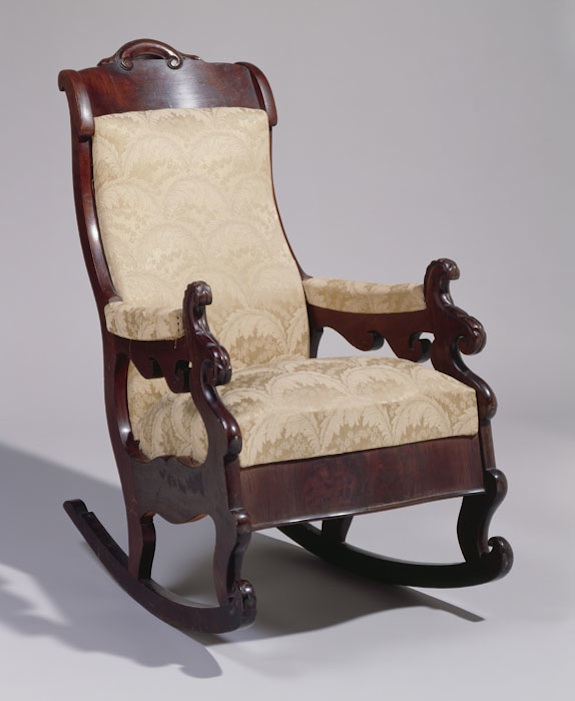
Cutouts, curves and unusual shapes make this Grecian style rocking chair unique. 1855-1860. Collection of the North Carolina Museum of History, courtesy of the Renwick Gallery
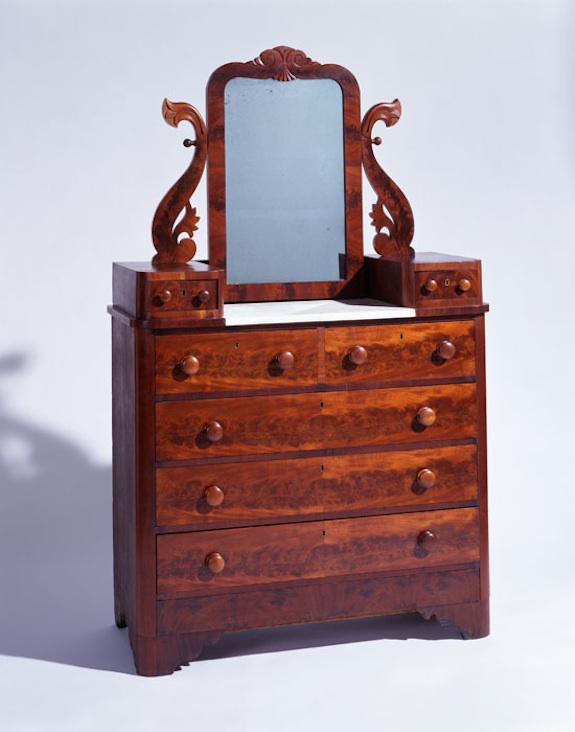
The flared forms on either side of the mirror echo similar shapes used on Day’s staircases. Collection of the North Carolina Museum of History, courtesy of the Renwick Gallery
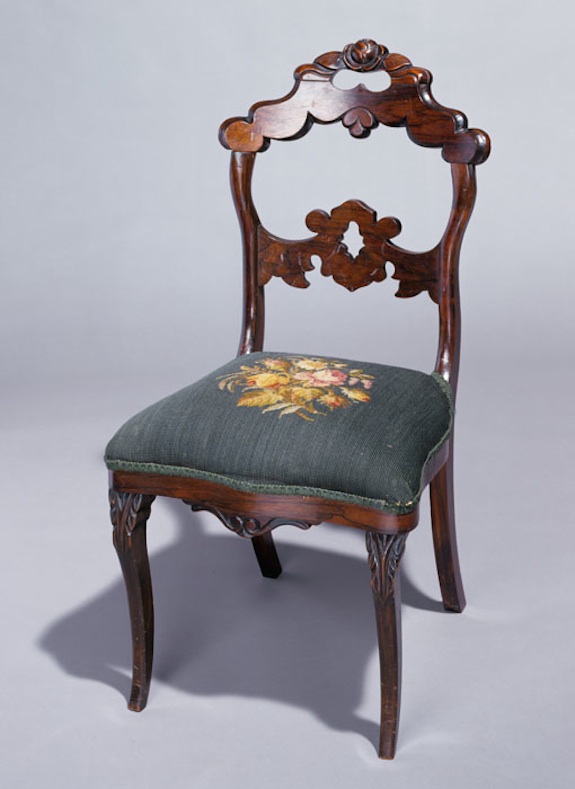
A faux rosewood finish over walnut gives this side chair its shine. 1855-1860. Collection of the North Carolina Museum of History, courtesy of the Renwick Gallery
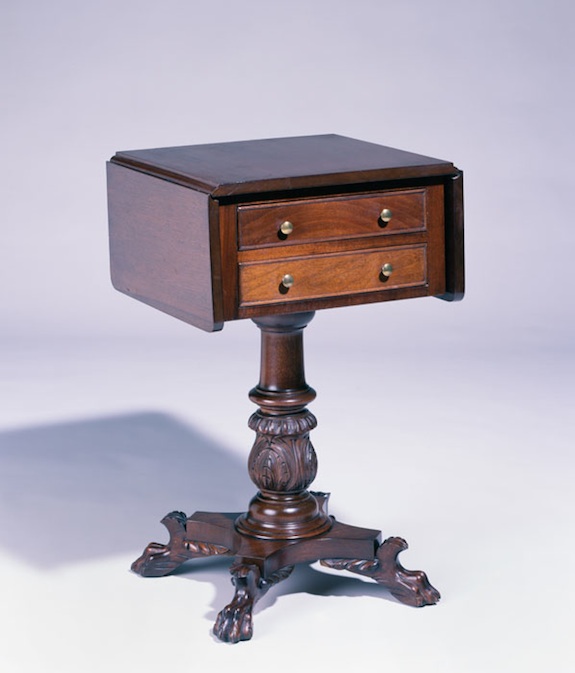
The skillful carving on the sewing stand’s feet testify to Day’s mastery. 1840. Collection of Margaret Walker Brunson Hill

Day also did architectural work inside clients’ home, adding his flourish to facades, staircases and archways. Newel, 1855, Glass-Dameron House, North Carolina. Photo by Tim Buchman, 2013

Day’s work lives on in the homes of many in North Carolina. Parlor Window, 1861, James Marlone House, Leasburg, North Carolina. Photo by Tim Buchman, 2013
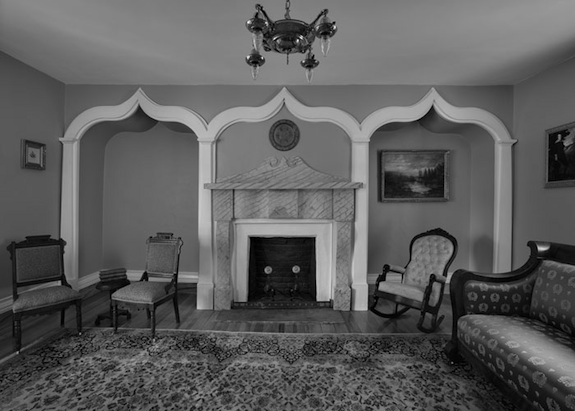
Playful peaks and balanced symmetries characterize his architectural work. Parlor, 1861, James Malone House, Leasburg, North Carolina. Photo by Tim Buchman, 2013

Clients chose areas in their home that got significant traffic to show off Day’s handiwork. Passage from Parlor to Sitting Room, 1860, Garland-Buford House, North Carolina. Photo by Tim Buchman, 2013
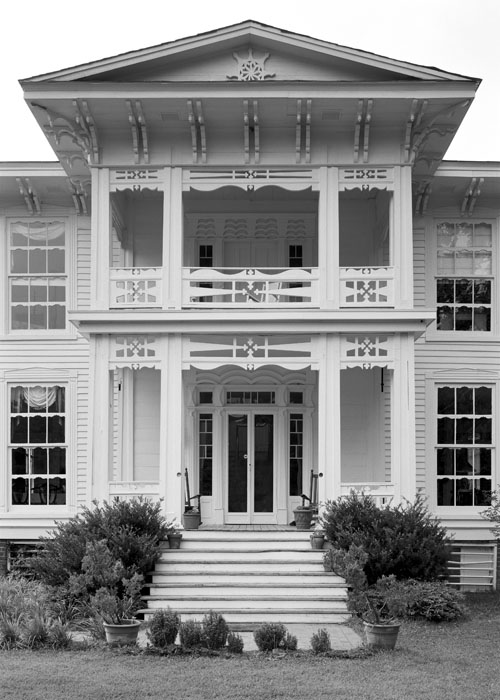
Day’s cutouts and molding liven up a front porch. 1860, Garland-Buford House, North Carolina. Photo by Tim Buchman, 2013
“Thomas Day: Master Craftsman and Free Man of Color” is on view through July 28, 2013 at the Renwick Gallery.
/https://tf-cmsv2-smithsonianmag-media.s3.amazonaws.com/accounts/headshot/Leah-Binkovitz-240.jpg)
/https://tf-cmsv2-smithsonianmag-media.s3.amazonaws.com/accounts/headshot/Leah-Binkovitz-240.jpg)